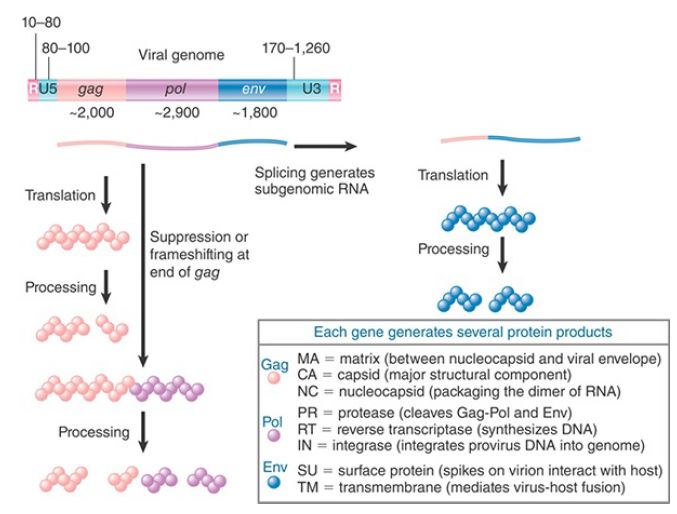

النبات

مواضيع عامة في علم النبات

الجذور - السيقان - الأوراق

النباتات الوعائية واللاوعائية

البذور (مغطاة البذور - عاريات البذور)

الطحالب

النباتات الطبية


الحيوان

مواضيع عامة في علم الحيوان

علم التشريح

التنوع الإحيائي

البايلوجيا الخلوية


الأحياء المجهرية

البكتيريا

الفطريات

الطفيليات

الفايروسات


علم الأمراض

الاورام

الامراض الوراثية

الامراض المناعية

الامراض المدارية

اضطرابات الدورة الدموية

مواضيع عامة في علم الامراض

الحشرات


التقانة الإحيائية

مواضيع عامة في التقانة الإحيائية


التقنية الحيوية المكروبية

التقنية الحيوية والميكروبات

الفعاليات الحيوية

وراثة الاحياء المجهرية

تصنيف الاحياء المجهرية

الاحياء المجهرية في الطبيعة

أيض الاجهاد

التقنية الحيوية والبيئة

التقنية الحيوية والطب

التقنية الحيوية والزراعة

التقنية الحيوية والصناعة

التقنية الحيوية والطاقة

البحار والطحالب الصغيرة

عزل البروتين

هندسة الجينات


التقنية الحياتية النانوية

مفاهيم التقنية الحيوية النانوية

التراكيب النانوية والمجاهر المستخدمة في رؤيتها

تصنيع وتخليق المواد النانوية

تطبيقات التقنية النانوية والحيوية النانوية

الرقائق والمتحسسات الحيوية

المصفوفات المجهرية وحاسوب الدنا

اللقاحات

البيئة والتلوث


علم الأجنة

اعضاء التكاثر وتشكل الاعراس

الاخصاب

التشطر

العصيبة وتشكل الجسيدات

تشكل اللواحق الجنينية

تكون المعيدة وظهور الطبقات الجنينية

مقدمة لعلم الاجنة


الأحياء الجزيئي

مواضيع عامة في الاحياء الجزيئي


علم وظائف الأعضاء


الغدد

مواضيع عامة في الغدد

الغدد الصم و هرموناتها

الجسم تحت السريري

الغدة النخامية

الغدة الكظرية

الغدة التناسلية

الغدة الدرقية والجار الدرقية

الغدة البنكرياسية

الغدة الصنوبرية

مواضيع عامة في علم وظائف الاعضاء

الخلية الحيوانية

الجهاز العصبي

أعضاء الحس

الجهاز العضلي

السوائل الجسمية

الجهاز الدوري والليمف

الجهاز التنفسي

الجهاز الهضمي

الجهاز البولي


المضادات الميكروبية

مواضيع عامة في المضادات الميكروبية

مضادات البكتيريا

مضادات الفطريات

مضادات الطفيليات

مضادات الفايروسات

علم الخلية

الوراثة

الأحياء العامة

المناعة

التحليلات المرضية

الكيمياء الحيوية

مواضيع متنوعة أخرى

الانزيمات
Retroviral Genes Code for Polyproteins
المؤلف:
JOCELYN E. KREBS, ELLIOTT S. GOLDSTEIN and STEPHEN T. KILPATRICK
المصدر:
LEWIN’S GENES XII
الجزء والصفحة:
23-4-2021
1995
Retroviral Genes Code for Polyproteins
KEY CONCEPTS
- A typical retrovirus has three genes: gag, pol, and env.
- The Gag and Pol proteins are translated from a fulllength transcript of the genome.
- Translation of Pol requires a frameshift by the ribosome.
- Env is translated from a separate mRNA that is generated by splicing.
- Each of the three protein products is processed by proteases to give multiple proteins.
A typical retroviral sequence contains three or four “genes.” (In this context, the term gene is used to identify coding regions, each of which actually gives rise to multiple proteins by processing reactions.) A typical retrovirus genome with three genes is organized in the sequence gag-pol-env, as indicated in FIGURE 1.

FIGURE 1. The genes of the retrovirus are expressed as polyproteins that are processed into individual products.
Retroviral mRNA has a conventional structure; it is capped at the 5′ end and polyadenylated at the 3′ end. It is represented in two mRNAs. The full-length mRNA is translated to give the Gag and Pol polyproteins. The Gag product is translated by reading from the initiation codon to the first termination codon. This termination codon must be bypassed to express Pol.
Different mechanisms are used in different viruses to proceed beyond the gag termination codon, depending on the relationship between the gag and pol reading frames. When gag and pol follow continuously, suppression by a glutamyl-tRNA that recognizes the termination codon allows a single protein to be generated. When gag and pol are in different reading frames, a ribosomal frameshift occurs to generate a single protein. Usually the readthrough is about 5% efficient, so Gag protein outnumbers Gag-Pol protein about 20-fold.
The Env polyprotein is expressed by another means: Splicing generates a shorter subgenomic mRNA that is translated into the Env product.
The gag gene gives rise to the protein components of the nucleoprotein core of the virion. The pol gene encodes proteins with functions in nucleic acid synthesis and recombination. The env gene encodes components of the envelope of the particle, which also sequesters components from the cellular cytoplasmic membrane.
Both the Gag or Gag-Pol and the Env products are polyproteins that are cleaved by a protease to release the individual proteins that are found in mature virions. The protease activity is encoded by the virus in various forms: It may be part of Gag or Pol, and at times it takes the form of an additional independent reading frame.
The production of a retroviral particle involves packaging the RNA into a core, surrounding it with capsid proteins, and pinching off a segment of membrane from the host cell. The release of infective particles by such means is shown in FIGURE 2. The process is reversed during infection: A virus infects a new host cell by fusing with the plasma membrane and then releasing the contents of the virion.

FIGURE 2. Retroviruses (HIV) bud from the plasma membrane of an infected cell.
Photos courtesy of Matthew A. Gonda, Ph.D., Partner at Power Ten Medical Ventures, Inc.
 الاكثر قراءة في مواضيع عامة في الاحياء الجزيئي
الاكثر قراءة في مواضيع عامة في الاحياء الجزيئي
 اخر الاخبار
اخر الاخبار
اخبار العتبة العباسية المقدسة

الآخبار الصحية















 قسم الشؤون الفكرية يصدر كتاباً يوثق تاريخ السدانة في العتبة العباسية المقدسة
قسم الشؤون الفكرية يصدر كتاباً يوثق تاريخ السدانة في العتبة العباسية المقدسة "المهمة".. إصدار قصصي يوثّق القصص الفائزة في مسابقة فتوى الدفاع المقدسة للقصة القصيرة
"المهمة".. إصدار قصصي يوثّق القصص الفائزة في مسابقة فتوى الدفاع المقدسة للقصة القصيرة (نوافذ).. إصدار أدبي يوثق القصص الفائزة في مسابقة الإمام العسكري (عليه السلام)
(نوافذ).. إصدار أدبي يوثق القصص الفائزة في مسابقة الإمام العسكري (عليه السلام)


















